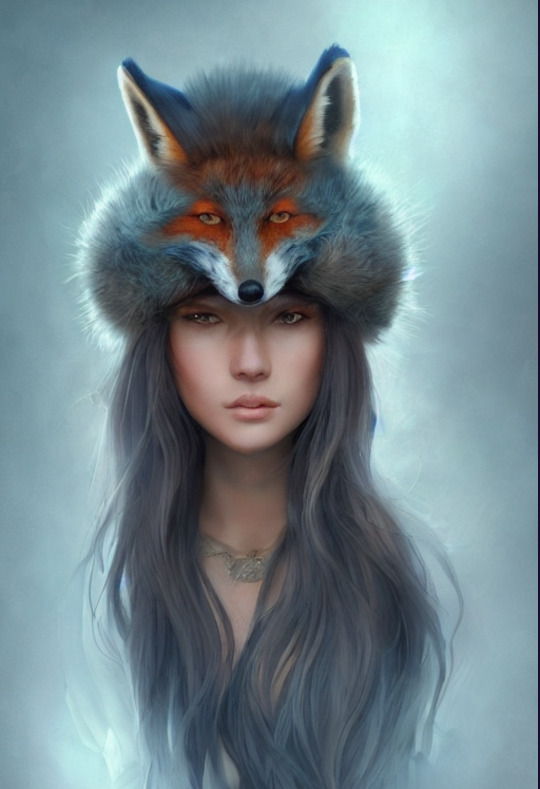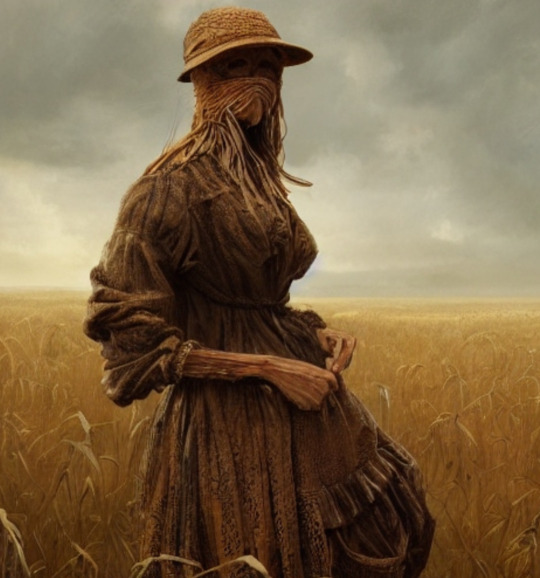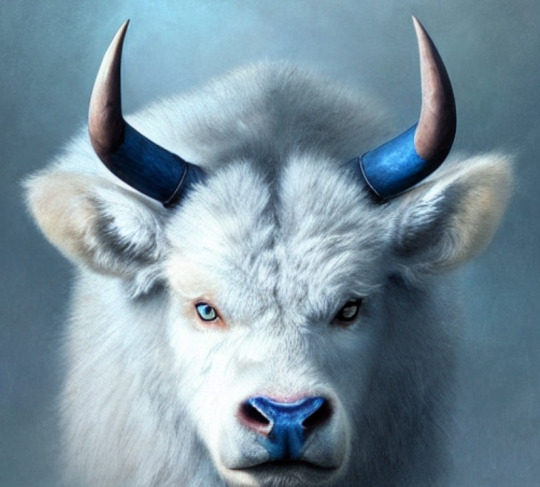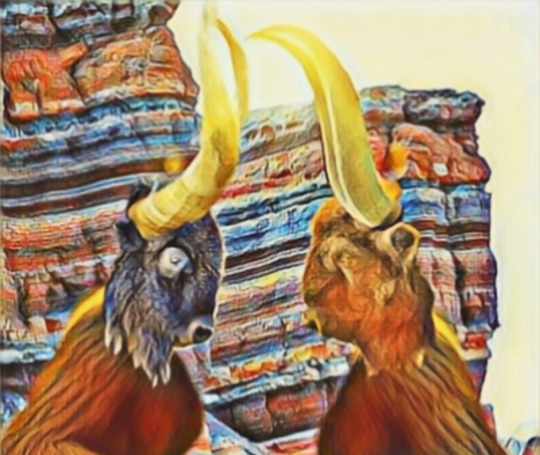Text
People Part III
The Sorrowfolk

The humans of the Moody Mountains are very diverse of culture owing to the many deep valleys that separate them. Each valley no matter how small is essentially it's own kingdom. Today we will focus on the folk of the crooked network of vales called The Sorrows.
The Sorrows take their name from a legend of the large glacial central lake where the vales meet. It's a salt water lake, and the legend says that it was created in ancient times after the death of the hero Rhedeg, when, upon hearing the news, his wife the Lady Caruad fell into an inconsolable grief and flooded the valley with her tears. Her spirit is still said to haunt the area, and salt from the lake is the region's biggest export. If you have read the post about the Ridwin race, you might notice a similarity in the story of Caruad grieving a lake into existence with her tears and the Ridwin religion's belief that the earth itself is a dead god and the rain is the tears of a goddess who grieved herself out of existence.
Like many humans of The Moody Mountains the Sorrowfolk are shepherds of yan, a large sheep or goat-like creature that are under constant threat from the other major inhabitant of the Moody's; the Gnolls. This way of life informs their religion, that is a form of Floklore practiced by the humans of the El Plains. Their faith intertwines with the rhythm of the land, the struggle against the jackal-like Gnolls, and the guardianship of their yan.
The Sorrowfolk believe in three Canine Spirits that were created by the Goddess Dyn the Divine Weaver (a very common life/fertility goddess among humans) who entrusted the Spirits with the sacred task of guiding the Sorrowfolk through the trials of existence, nurturing their spirits and shaping their destinies.
Bandar, the Companion:
Bandar strides alongside the Sorrowfolk, a loyal guardian and steadfast friend. As the Companion, Bandar watches over the flocks, herds them through perilous terrains, and joins in the hunt. With his unwavering loyalty, Bandar embodies companionship and protection, a beacon of solidarity in the face of adversity. Bandar is the Dog Spirit, and dogs are beloved by the Sorrowfolk. The king of the Sorrowfolk carries an ironwood crook as the badge of office to represent his affiliation with Bandar.
Rigwelar, the Adversary:
In the shadowed depths of the wilderness, Rigwelar prowls, a fierce embodiment of trials and tribulations. As the Adversary, Rigwelar tests the Sorrowfolk with fear, hunger, and the specter of death. Through adversity, Rigwelar imparts resilience and strength, forging the Sorrowfolk into stalwart guardians of their land and kin. The Gnolls are his people, he is the Spirit of the Wolf. Though a deity to be feared and placated, the Sorrowfolk do invoke Rigwelar in times of war, Pack Master, the head hunter of the Sorrowfolk, dons a wolf head helm in times of war as his duties turn from hunting to battle.
Renyar, the Trickster:
With a gleam in his eye and mischief in his heart, Renyar dances through the fields and forests, embodying the capricious nature of fate. As the Trickster, Renyar walks the fine line between aid and hindrance, bestowing unexpected blessings or weaving tangled snares. In his playful antics, Renyar teaches the Sorrowfolk the value of adaptability and cunning, a cunning guide in the intricate dance of life. Also known as The Egg Thief, as some believe it's unlucky to say his name and attract his attention, he is the Spirit of the Fox. The Follyfoot are a combination of jester, shaman, healer, storyteller and fortune reader of the Sorrowfolk, they wear a fox head hood.

In the rugged expanse of their homeland, the Sorrowfolk find solace and strength in the enduring presence of the canine spirits. With unwavering faith and steadfast resolve, they navigate the tumultuous currents of existence, guided by the wisdom of Bandar, the resilience of Rigwelar, and the boundless ingenuity of Renyar. In their shared struggles and triumphs, the Sorrowfolk weave a tapestry of resilience, unity, and unwavering devotion to the sacred land they call home.
#creative writing#adventurecore#fantasy#fantasy world#fantasy writing#medievalcore#rangercore#magpiecore#truestl#unintelligible goblin noises#goblincore#world building#fiction#religion#fantasy religion#dogs#fox#wolf
3 notes
·
View notes
Text
People Part II
The Ridwin

The Ridwin are by far the most numerous, most diverse, and yet most elusive race on the planet. What they have in common; they are short, growing no taller than a human of 10 or 11, they have tails, and pointed ears. They vary greatly however based on the climate in which they live. In temperate climes they appear green or yellow-brown skinned with slender ears and tails. In hotter places they are red as devils, with larger floppier ears and tails to regulate temperature. In colder regions they are blue with short stubby ears and tails to protect from frost bite. Their islander cousins from the Skipping Stones are perhaps the most unique, being shorter still than mainlanders and monkey-like in appearance and behaviour. Humans even have a different word for the islanders, whereas they call most Ridwin "goblins" they call islanders "imps".
They live in nomadic clans that move around a particular hunting ground, with maybe one major settlement that can be raised and moved and reassembled elsewhere swiftly. Their technology isn't much beyond stone age, but their knowledge of the natural world is unsurpassed.
Ridwins believe the world is the body of an ancient dead god, and that all life forms are merely the insects and the mold. While this might sound like a rather gloomy outlook on life, they actually find it quite liberating. They do not worship the dead god though. He's dead. They do not even know his name, simply calling him The Earth Bones. This is why they have no gods of places, such as rivers or mountains or forests, as these are just bits of dead god covered in the same decay they themselves.
Instead, the Ridwin venerate a pantheon of sky or weather gods, as things that come from above are believed to be all that remains of The Earth Bones' Goddess lover, who poured all her essence into her grief. Her tears became the rains, her sighs the winds, and light her love. The gods the Ridwin actually worship is the weather created by an ancient goddess that grieved herself out of existence. Different Ridwin clans focus on different gods or groups of gods, but all are recognised and respected.
The Rain Gods
Glaw - God of rain and storms.
Laith - God of drizzle and damp.
Eira - Goddess of snow, frost and ice.
Niwl - Goddess of mist, fog and clouds.
The Wind Gods
Aderyn - God of cold winter wind.
Awel - Goddess of warm summer breeze.
Gawl - God of gales.
Ortheniad - Goddess of the music of the wind.
The Light Gods
Geni - Goddess of dawn and daybreak.
Awyr - Goddess of noon light and clear skies.
Waith - Goddess of dusk and twilight.
Enfys - Goddess of colour and rainbows.
The Reflections and The Shadows
The Ridwin also believe that, just as everyone has a shadow and a reflection, so do the gods. The Reflections and The Shadows are themselves gods of their dimensions, and just as we have some control over our shadows and reflections, so do they weald influence on our world. Worshipers of these deities tend to form smaller cults within associated clans.
For example, the Painted-Face clan of The Haze-Lands venerate Enfrys, Goddess of colour and rainbows, but within their society their will be a cult to Enfrys' Reflection, Rhubanio Goddess of aurora borealis, and her Shadow, Seryn Goddess of starlight.
#creative writing#adventurecore#goblincore#fantasy#fantasy world#fantasy writing#medievalcore#rangercore#tesblr#world building#goblin girl#green goblin#unintelligible goblin noises#elves#elf#green#fantasy race#fantasy roleplay#fantasy religion#gods#pagan#pagan gods#fiction#fictional gods
1 note
·
View note
Text
Myths and Legends Part I
The Strawman

The "Strawman" superstition - the Harvest Festival tradition of children making and subsequently burning on a bonfire a "corn dolly" - likely originated in the southern Weald of Keyward, Myriad's breadbasket. The agricultural practice of hanging up straw man effigies called "scaregryphs" to frighten away maguars and grass dragons is common, but after the harvest they serve no purpose but to house rot, grummitfly larvae and other pests, and so are burnt.
The Keyward fairy tale of "The Strawman", wherein a courier is hired to deliver a cursed item for a mage, but is killed on the journey, only to rise again undead is connected to this custom. The courier wanders the world in search of the mage to finish his task, and as his body parts rot away he replaces them with those of straw and cloth until nothing of the man remains.
Or, in some darker variations, the mage is in fact an Evermonk - a member of a vile sect of necromantic warlocks bent on immortality - and it is in fact he who arranges the murder, and the courier made a witless guinea pig in the Evermonk's experiment. In these tales The Strawman doesn't wonder in hopes of completing his contract but in search of vengeance.

This might be a tale told to children to stop them from messing with farmer's scaregryphs and encourage the end of season burnings, because you never know, that scaregryph in your field... it might be The Strawman!
As the tradition spread out to less rural areas it developed into the modern superstition, where a Strawman is made specifically for burning, and is often used for begging charity ("Gidding for the Strawman"). But beware, as the superstition goes, for if you make a Strawman dolly and fail to burn it by Harvest Festival night, it will come alive while you sleep and get you!

#creative writing#adventurecore#fantasy#fairycore#fantasy world#fantasy writing#goblincore#medievalcore#rangercore#tesblr#world building#fiction#original character#original content#scarecrow#autumn#autumn aesthetic#harvest moon#harvest festival#necromancer#urban legends#superstition#superstitous#guy fawkes#bonfire#bonfire night#creepypasta#creepy art#creepycore#halloween
16 notes
·
View notes
Text
People, Part I
The Djosé

The Djosé are a tall, fur covered humanoid with two horns. To us, they would look like a bison-person in the same way a minotaur is a bull-person and a fawn is a goat-person. Despite their size and relative strength they are generally peaceful and gentle people, unless provoked.
The Djosé of the Great Stone Desert and the Moody Mountains of the northern Dawnlands have no gods, they are ancestor worshipers. Due to their unique physiology, they don't breed and have children like we do, they die, and eventually the body regenerates and is born again with no memory of the previous life. They quite literally reincarnate as a means of reproduction. A quirk of this method is they have need of only one gender, or to be more precise, are genderless.
Djosians believe that you as a living individual only exist in the speck of time when your soul (or Djo) and your body (or Sé) are combined. When you die your body awaits regeneration and your soul moves on to a new body. Therefore, all individuals you ever know or come before you are truly unique. A death is therefore both tragic and wonderful, and the Djosians hold those who have died with great regard (hence Ancestor Worship).
The purpose for existence, they believe, is to experience every possible thing through the eyes of every possible person. They believe that one day the universe woke up and went mad from the sheer immensity of everything, so it split itself into shards (Djo) to better understand itself, and that one day, all souls will have lived in all bodies, and the souls shall combine into the Great Djo (essentially the first "god") and the bodies shall combine into the Great Sé (essentially a new world).
The Djosé have a very significant funeral right that each individual begins at reincarnation (birth). Each Djosian will build an intricate stone stack throughout their lives, into which they will incorporate items or carvings to represent pivotal times or experiences in said life. Upon death, a Djosian is tied in a funeral sack filled with a specially bred moth that dehydrates the body and organs, preserving them. The moths are then released, never to be reused, and the body is intermed in the stone stack to await its next life.
This process is timely and difficult, as the stacks are not in specific locations such as a cemetery, but a location of significance chosen by the Djosian who builds it. The stacks, once vacated, act as memorials and shrines at which the living meditate.
On very rare and momentous occasions two Djosians might meet who's souls and/or bodies once formed another individual, a common Ancestor. This Reunion is very special, as Djosians can't remember past lives, and this chance encounter allows both of them to commune with their common Ancestor. Such a meeting is marked out by their horns starting to glow as they get closer to each other. Such events occur once or twice in a generation, and are celebrated in a holy festival known as Séjoar in Djorian (their language).

Both individuals meditate and receive three visions, a shared memory that they both see, and one separate vision each. By tradition they must never speak of these visions, except for the shared memory. This is followed by feasting and celebration.
The Djosé come from the harsh Stone Dessert, that according to legends was swept clear of all earth and vegetation by a thousand years of rain that wore the mountains flat. The Djosé are the only race hardy enough to call it home, and live off lichens and mosses, which is about the only things that grow there. The stone desert resembles a real world mesa dessert, but instead of warm reds and terracotta oranges, it is coloured grey blue slate, with bands of green and turquoise, laced with fine golden veins. The area's mineral resources are of great interest to outsiders, if they could only figure out a way of surviving it.
On the rare occasion a Djosian might venture beyond its homeland, it might discover it is known by another name; Troll.
#medievalcore#adventurecore#rangercore#goblincore#fantsay#fantasy rp#fantasy writing#fantasy race#fantasy world#fantasy#fantasy roleplay#lore#oc#oc lore#world building#oc world#tesblr#creative writing#writing project#writing
7 notes
·
View notes
Text
Geography Part I
"...and Nunerion did crown the world with the great bow, Aurcus, so that we might judge the passage of time, and Belerion his son did gift it light." - exert from The Impiriad
Ring World does not receive its light or heat from a sun which it orbits, as ours does, rather it is encircled by a ring, not unlike that of Saturn, but this ring is not made of rock and ice, but a single loop that emits solar-like energy.
What is the ring made of? The inhabitants of Ring World don't know. To them it is made of the element of light, and was placed there by the gods. Their word for the ring is the Aurcus, which comes from an archaic word meaning "light bow", not "light ring", as to them the ring appeared to be a great arch in the sky akin to a rainbow, they had no way of knowing what their astronomers now know
The ring rotates around the planet north-south, whereas the planet itself spins east-west. This means that, at its extremes, the equator is almost always daytime but the poles are mostly night. If you were to stand at the equator, one 24 hour cycle would consist of 4 "days" interspersed with very short "nights." Depending on the position of the ring these "days" are called "parallel days" or "meridian days" which are used similarly to our AM and PM. The further north or south you travel the shorter the days and longer the nights become, until you reach a pole where you only have two short days interrupting almost constant night.
The result, similar to our world, is that the equator is very hot, the poles very cold, and the lands in-between are temperate. Lands in the northern hemisphere are called the Dawnlands and lands in the Southern hemisphere are called the Dusklands. However people and animals haven't evolved similarly as they have in our world, as our equator might also be hot, it does also have long, cooler nights, which don't exist on the ring world.
The output of energy from the Aurcus does not remain constant. Once every four weeks, for a period of about 48 hours, it doesn't "shine" as it usually does, but "glows". During a glow, the world is illuminated by a ghostly pale light, a lot like our world on a clear full moon night. Also, over the course of 13 months, the intensity of output pulses, when it's at its most intense the planet experiences summer, and when it's at its weakest the planet experiences winter. This means it's the same season no matter what hemisphere you are on.
So, by observation of the ring you can tell what time of the day, month and year it is, and so the Aurcus is associated with Nunerion, God of Time. His wife is Sereni, Goddess of Space, who hung the stars in the heavens, by which you can navigate space. Their son, Belerion, is the God of Light, as light comes from both the Aurcus and the Stars. His children, who he had with Elonia the Goddess of Waters, are the various Spirits of Colour, as rainbows come from light and rain. Of course not all cultures believe in this religion, just as not all people in our world believe in Jupiter or Mars but still acknowledge the planets, or they do not believe in Woden or Thor but still acknowledge Wednesday and Thursday, so I mention them here. This is an old religion that belongs to an empire, therefore its influence on many cultures is considerable.
I hope you've enjoyed this introduction to the Ring World. I can't keep calling it that though, it needs a proper name. If you like this project please follow for more and suggest a name. Thanks for reading.
#medievalcore#adventurecore#rangercore#goblincore#world building#fantasy world#fantasy writing#writing#writing project#fantasy#dnd#in the beginning#fake science#new worlds#creative writing#tesblr#imagination
0 notes